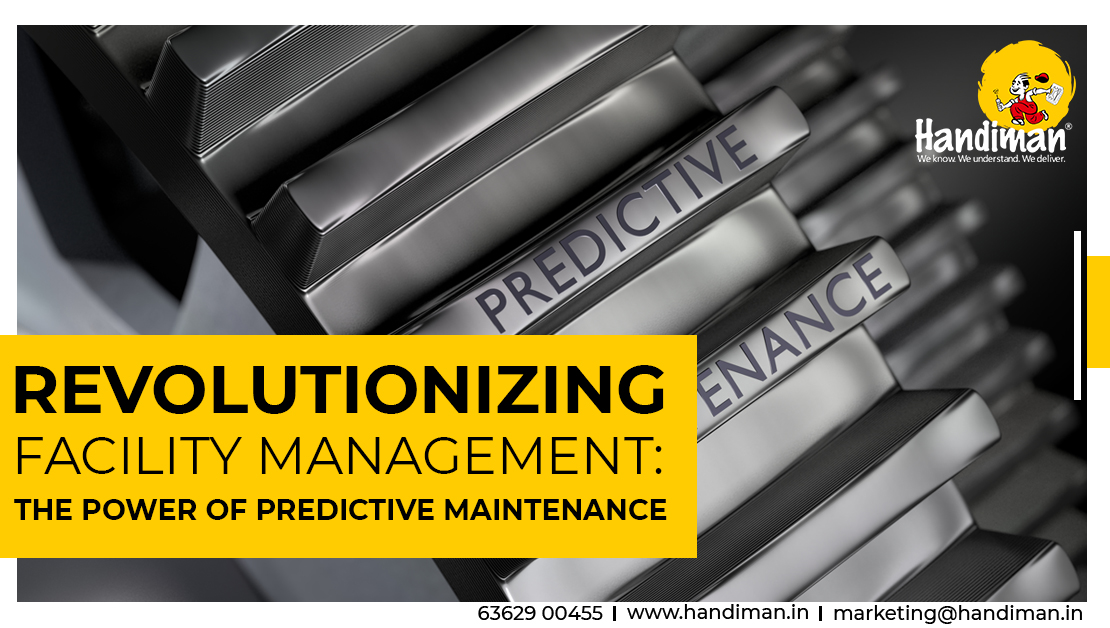
Revolutionizing Facility Management The Power of Predictive Maintenance
Maintaining a facility's seamless operation is essential in the quickly changing field of facility management. Traditionally, facility managers have performed reactive maintenance, addressing problems as they occur. This approach, however, may result in unanticipated downtime, elevated costs, and diminished effectiveness. Enter predictive maintenance, a revolutionary approach that uses cutting-edge technology to predict and stop potential failures while improving a facility's overall performance.
Let us explore the idea of predictive maintenance and how it has changed facility management firms.
Understanding Predictive Maintenance: With predictive maintenance, you can predict when equipment failures are likely to happen by using data analytics, detectors, and machine learning. Facility managers can learn more about the health of equipment and systems by continuously monitoring various parameters like temperature, pressure, vibration, and other pertinent indicators. They can foresee when maintenance is necessary well in advance of a breakdown thanks to these insights.
Key Benefits:
- Cost Savings: The costs of unplanned downtime and emergency repairs are significantly reduced by predictive maintenance. Businesses can avoid costly operational disruptions by fixing issues before they get worse.
- Enhanced Efficiency: Schedules for routine maintenance are frequently ineffective and cause unneeded downtime. Predictive maintenance reduces downtime and increases operational effectiveness by better planning maintenance tasks.
- Extended Equipment Lifespan: Equipment inevitably experiences normal wear and tear, but with predictive maintenance, facility managers can proactively deal with these problems, extending the life of vital machinery.
- Data-Driven Decision Making: Data gathered from sensors and previous performance records are the foundation of predictive maintenance. Based on this information, facility managers can make sensible choices that result in better resource allocation and improved planning.
- Improved Safety: Equipment failure can put people and the environment at risk for injury. Predictive maintenance lowers these risks by spotting issues and resolving them before they become harmful.
Implementation Steps:
- Data collection: Install sensors and data collection systems to track pertinent parameters and track how well the equipment works.
- Data Analysis: Identify patterns, anomalies, and potential failure trends using advanced analytics tools and machine learning algorithms.
- Predictive Plan: Create predictive models that project equipment failures based on historical data. As these models gain knowledge from actual scenarios, their accuracy improves over time.
- Automated alert systems: Automated alert systems that inform facility managers when equipment is likely to need maintenance should be put in place. This makes planning and timely intervention possible.
- Scheduled Maintenance: Make sure there is a minimum amount of operation disruption by planning maintenance activities based on forecasts and insights.
Challenges and Considerations:
- Data Quality: High-quality data are necessary for accurate predictions. Ensure sensors are calibrated correctly and data is cleaned to avoid inaccurate results.
- Costs of implementation: Building the required infrastructure can be expensive. However, the benefits and cost savings over the long run frequently outweigh the initial outlay.
- Change Management: A cultural shift is required to switch from a reactive to a predictive maintenance approach. It's crucial to implement effective change management techniques and training.
Conclusion:
Businesses can address maintenance needs proactively, lowering costs and improving efficiency and safety by leveraging data and technology. A strategic imperative for remaining competitive in the facility management sector, adopting predictive maintenance is no longer just a choice as the digital landscape continues to change.
